 [C]learly — as one could see from the name of this blog — I am a scone fan. I’ve written of my love and admiration of scones here before, but I don’t have a problem making a new scone recipe to remind me of everything good — and great — about scones.
[C]learly — as one could see from the name of this blog — I am a scone fan. I’ve written of my love and admiration of scones here before, but I don’t have a problem making a new scone recipe to remind me of everything good — and great — about scones.
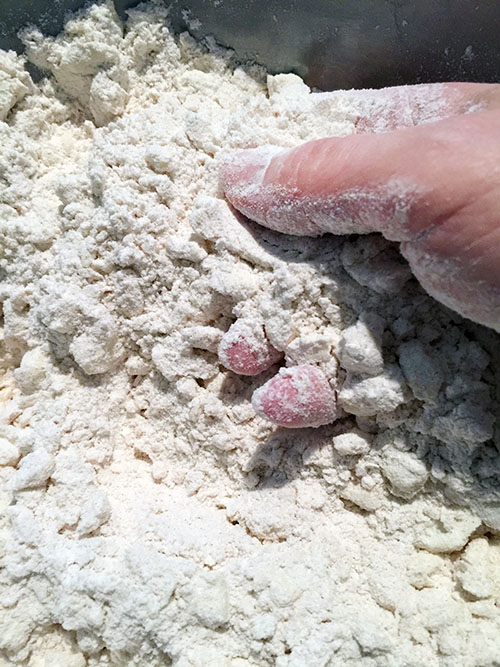 [O]f course, scones taste good, but they are good in other ways. Making scones settles me. I remembered this recently, making the Maple Walnut Scones (you’ll find the recipe here) from “Baked: New Frontiers in Baking†by Matt Lewis and Renato Poliafito (2008). I felt that overwhelming contentedness,
[O]f course, scones taste good, but they are good in other ways. Making scones settles me. I remembered this recently, making the Maple Walnut Scones (you’ll find the recipe here) from “Baked: New Frontiers in Baking†by Matt Lewis and Renato Poliafito (2008). I felt that overwhelming contentedness, 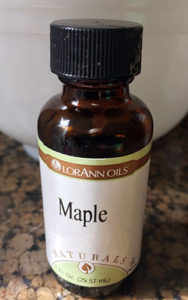 again, as my fingers blended bits of cold butter with dry ingredients (flour, sugar, baking powder and soda, cinnamon and salt) in the wee hours (OK, just before sunrise) of the morning. I remembered my beginnings with scones, first tasting them during the burgeoning coffeehouse scene of the 1990s, then making them myself, a needed, peaceful activity during trying times.
again, as my fingers blended bits of cold butter with dry ingredients (flour, sugar, baking powder and soda, cinnamon and salt) in the wee hours (OK, just before sunrise) of the morning. I remembered my beginnings with scones, first tasting them during the burgeoning coffeehouse scene of the 1990s, then making them myself, a needed, peaceful activity during trying times.
[I] was curious as to how these scones would turn out, because I’ll admit I’m not a big maple fan. My experience with maple-flavored anything is that the flavor tends to overpower whatever it’s in, be it frosting or candy. But I was willing to try these scones, finding a maple flavor from a company I liked.
Between the four cups of flour and three sticks of butter, it was obvious this would yield a lot of scones (12), so I made them the day before a work event where I could share.
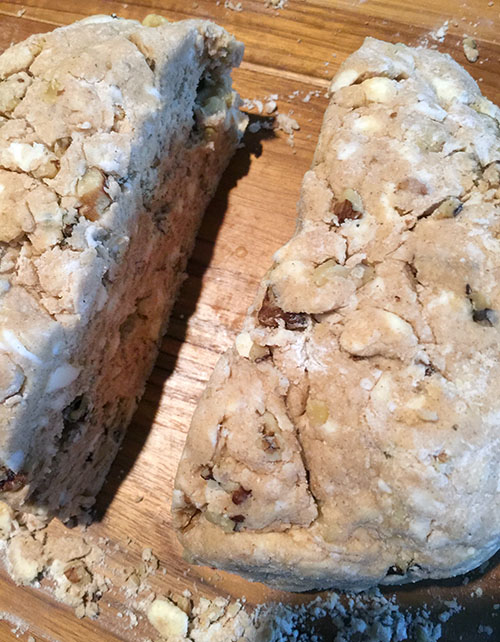
These scones, like so many I have made, use an egg in the wet ingredients, one of the primary differences between scones and biscuits (which are usually eggless).
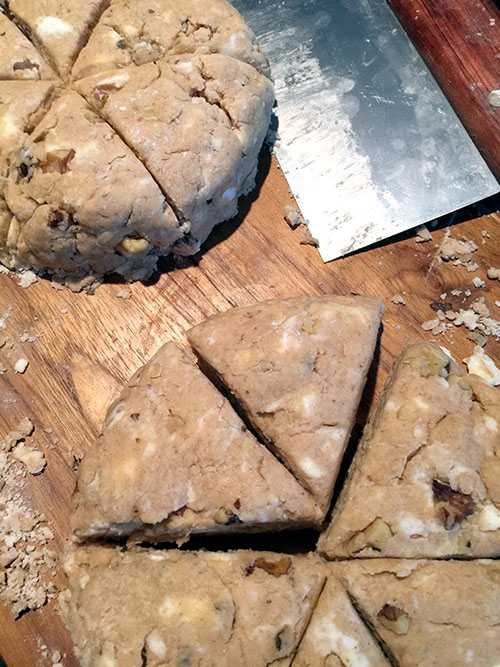 [T]he dough is slightly crumbly when it’s first mixed, but with a few light kneads (four or five) comes together. Less kneading is more in the scone and biscuit camp. Your scones will have a beautifully tender texture with as little handling as possible. Just do enough to get the job done!
[T]he dough is slightly crumbly when it’s first mixed, but with a few light kneads (four or five) comes together. Less kneading is more in the scone and biscuit camp. Your scones will have a beautifully tender texture with as little handling as possible. Just do enough to get the job done!
I shaped my dough and divided it, ending up with two disks that had a nice thickness of about 1-1/2â€. These were each cut into six wedges, really showcasing all those butter bits and toasted walnuts within.
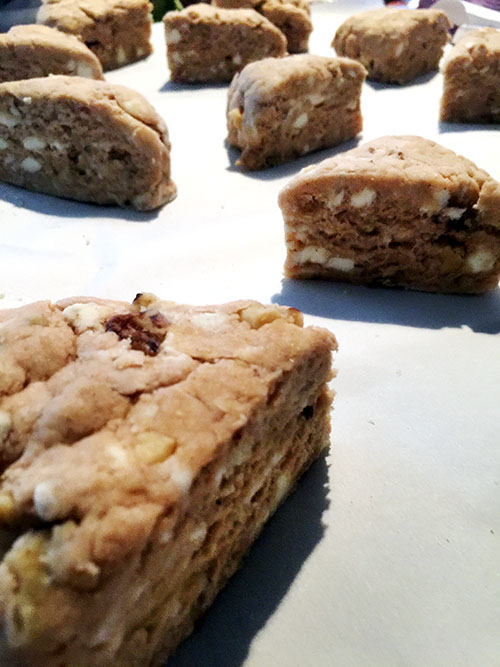 I did brush the tops with buttermilk (held back from the wet ingredients). I liked the idea of the tangy/sweet finish of the buttermilk sprinkled with the crunchy, glittery raw sugar.
I did brush the tops with buttermilk (held back from the wet ingredients). I liked the idea of the tangy/sweet finish of the buttermilk sprinkled with the crunchy, glittery raw sugar.
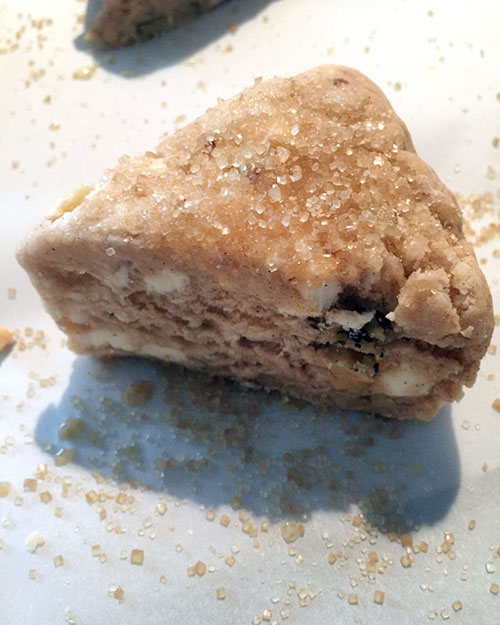
These scones promised to be beauties, to be sure. Once they began baking, the smell was TREMENDOUS. The maple was there, but so, too, was the cinnamon and even a little whiff of the walnuts. I was excited!
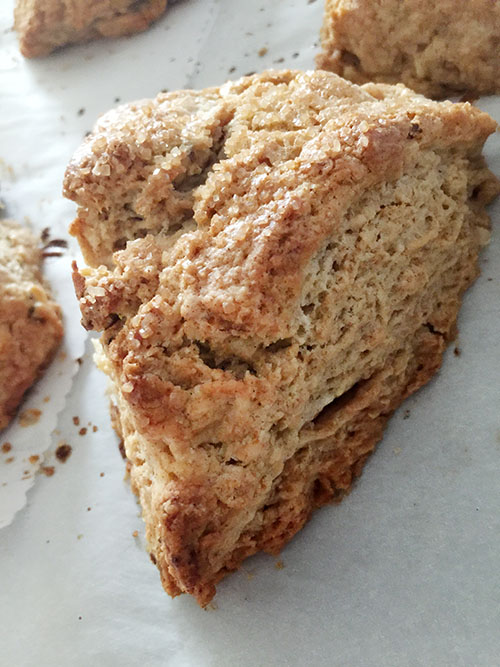 [T[he scones really blossomed in the oven (expanding so much that I considered making them a little smaller in the future). It was very hard to wait for the to cool to glaze them. In fact, I considered skipping the glaze altogether because I tend to prefer not to add that sweetness to most baked goods that call for it.
[T[he scones really blossomed in the oven (expanding so much that I considered making them a little smaller in the future). It was very hard to wait for the to cool to glaze them. In fact, I considered skipping the glaze altogether because I tend to prefer not to add that sweetness to most baked goods that call for it.
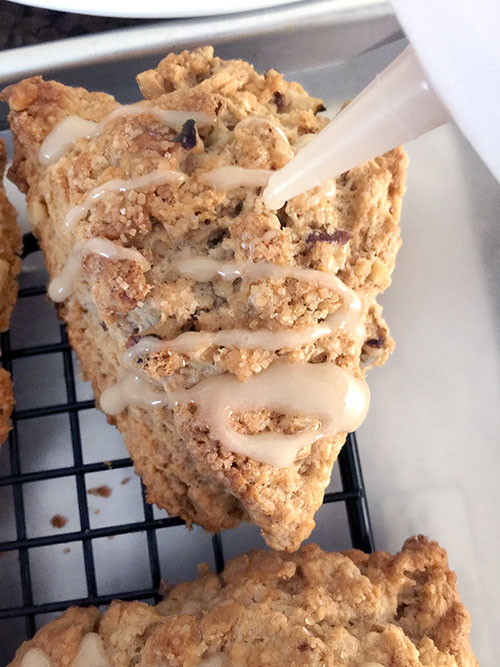 I decided to give this glaze — simply made with powdered sugar and maple syrup — a try. I did throw in a pinch of salt and ended up adding a teaspoon or so of half-and-half because the glaze seemed too thick to drizzle. Speaking of that, for those of you who feel drizzle-challenged (do I use a fork, a spoon a whisk or what to do the job?), I have found using one of those inexpensive condiment squeeze bottles a delightful (and even less messy) answer to “controlled†drizzle with somewhat even results.
I decided to give this glaze — simply made with powdered sugar and maple syrup — a try. I did throw in a pinch of salt and ended up adding a teaspoon or so of half-and-half because the glaze seemed too thick to drizzle. Speaking of that, for those of you who feel drizzle-challenged (do I use a fork, a spoon a whisk or what to do the job?), I have found using one of those inexpensive condiment squeeze bottles a delightful (and even less messy) answer to “controlled†drizzle with somewhat even results.
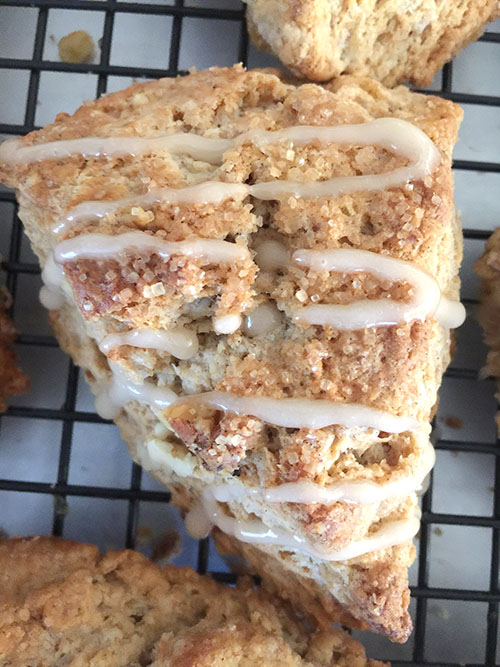 [W]hen — at last — I could eat one of these ample gems, I was so pleased! The maple flavor did not over-dominate and was balanced out with the cinnamon and the toasted walnuts (I think toasted pecans would be great, too).
[W]hen — at last — I could eat one of these ample gems, I was so pleased! The maple flavor did not over-dominate and was balanced out with the cinnamon and the toasted walnuts (I think toasted pecans would be great, too). The sweet crunch of the sugar and the sticky note of that maple glaze added nice finishing notes. While any scone is best served the same day as they are baked, these were fine and dandy the next morning at work. Another great thing about scones is seeing others enjoy them. And this recipe made enough that I didn’t even mind sharing!
The sweet crunch of the sugar and the sticky note of that maple glaze added nice finishing notes. While any scone is best served the same day as they are baked, these were fine and dandy the next morning at work. Another great thing about scones is seeing others enjoy them. And this recipe made enough that I didn’t even mind sharing!
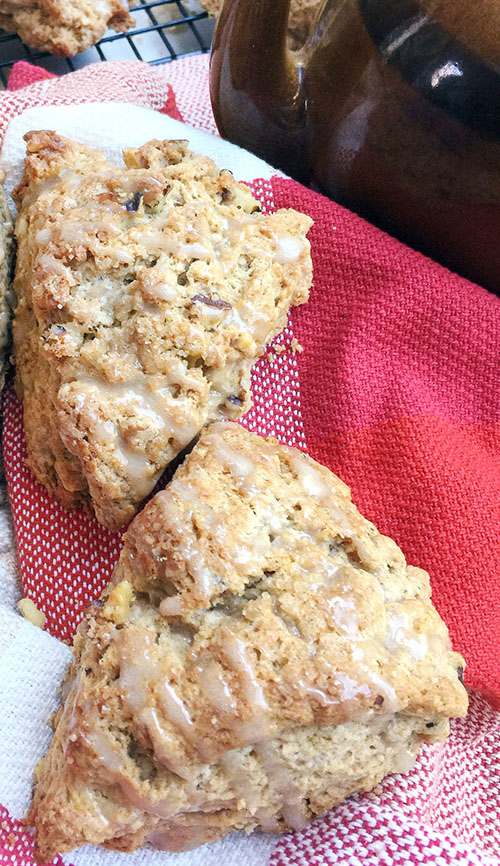
Blogger’s Note: You’ll find the recipe for Maple Walnut Scones at http://bakedsundaymornings.com/2018/03/01/in-the-oven-maple-walnut-scones/